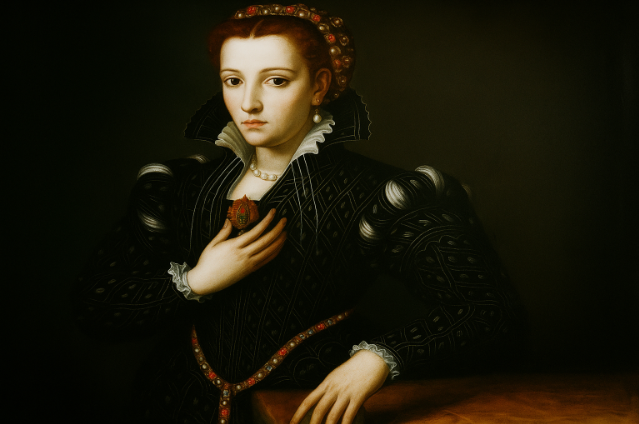
Unveiling the silent suffering of women through Browning’s haunting monologue.
What defines a person? Is it the way they have lived all their lives or the anecdotes made about them by society? Men have had the luxury of being defined by their actions and anecdotes, being represented as a fully-fledged being. On the other hand, throughout history and even in the present day, women have been defined relative to men—not only through the lens of relations but also with their entire personhood condensed to the words of men.
Women are often characterised as flawed versions of men, an other throughout history and mythology across the world. The idea of “woman” has often been painted through dehumanisation or contempt on one end and objectification and deification on the other; this renders them inhuman, unacknowledged as a fellow being worthy of respect. From Aristotle to the (male-centred) biblical rhetoric of Eve being made of Adam’s rib—which itself derived from a flawed translation—the perspective of women has always been shown by men. Since women and girls have been removed from their own personhood and education, it is only recently that women have been able to let their voices be heard—whether it be through books, movies, comics, and more.
My Last Duchess, written by Robert Browning, paints the picture of a woman with nothing but the perspective of her husband, whose words are a strange amalgamation of lies and truth, giving merely a facsimile of the woman rather than her actual self. It is a dark piece of poetry that explores the mystery of the unnamed Duke’s wife as he informs the listener who has been summoned of the prospect of a second marriage. To risk a pertinent spoiler, the ending of the Duchess is left open-ended. This means that it is unclear whether the Duke killed the Duchess or abandoned her in a nunnery or asylum, all of which are fates met by women and girls at the time if they went out of the line of proper femininity and societal order.
From the title of the poem, it is seen that the woman in the poem is akin to an object—a possession—for the speaker never speaks of her as a person. The possessive pronoun is highlighted, and Browning makes use of ambiguity in the usage of the word ‘last’, as it could refer to the aforementioned Duchess being the Duke’s previous wife or could be a morbid reference to her supposed death. Though the poem is set in the Elizabethan era, the emotions invoked closely resemble the mindset of the average Victorian male who viewed women as property that could be replaced and exchanged. If one is to look at the interpretation that the Duchess was sent to a nunnery or asylum, it can closely reflect the trend of the era, where supposedly disobedient wives were sent to mental asylums with a fabricated or exaggerated case of “mental illness” to languish in underfunded and abusive institutions.
The usage of dramatic monologue in the poem lends credence to the idea of a male-dominated narrative throughout the years, as the only voice heard is that of a privileged male. With only a portrait and the speaker’s words as a window to the woman’s personality, one has to read between the lines or be comfortable with the lines fed by the Duke. From the objectification of her features, such as the repeated references to her red cheeks and the implication that his wife was flirtatious or eager to please other men, the speaker revels in tearing down his late wife’s image. This mirrors real-life phenomena where women have been historically discredited for their existence, such as the Salem witch trials.
Never in the poem is the perspective of the deceased Duchess shown. The narrative, the stories, her personality, and even her face are controlled by the speaker through carefully constructed tales and a perfectly pristine portrait, which is put on display—a representation of objectification through the male gaze. Through the poem, it is implied that the speaker did not like his wife interacting with other men, but is all right with displaying her painting after her death, showing how women seem to exist only for the shallow purposes of male exhibition. All of her actions are coloured through the Duke’s almost Othello-like suspicion, where he simultaneously paints her as a naïve woman and a flirty seductress who has wrapped every male around her fingertips. The Duke constantly romanticises her portrait and figure, showing off the shallow way in which powerful men, under the influence of the patriarchy, view women through visual lenses. The Duchess is merely an object for his gaze and not an equal companion.
This echoes the real-life situation of Robert Browning, which proves that the man’s view of women can represent not only sexual or romantic views of women but also the social view. His wife, Elizabeth Barrett Browning, was kept isolated by her father, and it was only with Robert that she got the freedom to live her own life and pursue a career in poetry, which was much more illustrious in the Victorian era prior to her death.
The voice of women is still obscured in the mainstream, subject to past narratives written and controlled by the patriarchy. My Last Duchess offers a look into this phenomenon of discreditation of the female sex, written by a man who understood how society functions, regardless of age.
